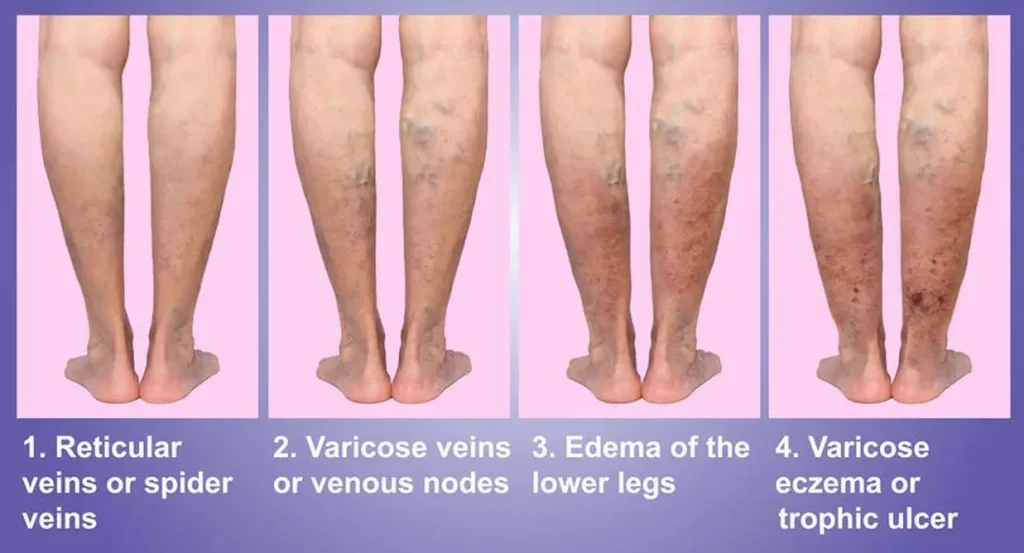The goal of varicose vein treatment is to render the affected veins ineffective and facilitate blood circulation through healthier veins. Treating medium and large varicose veins is generally recommended for both aesthetic and health reasons.

Previously, surgical methods were commonly used for varicose vein treatment, but today, many non-surgical or minimally invasive treatment options are available.
If you are considering non-surgical varicose vein treatment in Izmir, consulting a specialist like Op. Dr. Haluk Çekmeceli could be an important step. Taking advantage of a free examination to ask questions and learn about treatment options can help you better understand the treatment process. You can also contact us via our WhatsApp line. For clinic information, please visit our contact page. https://wa.me/905422955254
What is Varicose Veins?
Varicose veins are a condition that can cause vein enlargement and circulation problems in the legs. Typically seen in the legs, this condition is categorized into spider veins, medium-sized, and large varicose veins. (1)
These types of varicose veins can arise due to valve insufficiency in the superficial veins under the skin, leading to symptoms like swelling, pain, and itching in the legs.
Spider Veins: These are very thin veins, about 1-2 mm, close to the skin surface. They usually appear as red or purple “spider web” patterns.
Medium-Sized Varicose Veins (Reticular): These are larger and deeper veins, about 2-3 mm, usually found in the legs and thighs.
Large Varicose Veins (Varicose Veins): These are swollen, twisted veins in the legs, appearing blue or purple. They can be a serious health concern due to potential circulation problems. (2)
Causes of Varicose Veins:
Genetic Factor: A family history of varicose veins can increase your risk.
Aging: As you age, the elasticity of veins can decrease, making valves more prone to damage.
Gender: Women are at a higher risk due to hormonal changes, pregnancy, and menopause.
Pregnancy: The increased blood volume and pressure on the veins during pregnancy can contribute to valve damage.
Being Overweight: Excess weight puts additional pressure on the legs, increasing the strain on the valves.
Prolonged Standing or Sitting: Standing or sitting for long periods can make it harder for blood to be pumped up the legs, putting extra strain on the valves.
Sedentary Lifestyle: Lack of movement can weaken muscles and impair blood flow, leading to varicose veins.
Hormonal Changes: Hormonal treatments like birth control pills or hormone replacement therapy can increase the risk.
Smoking: Smoking weakens blood vessel walls and can contribute to varicose veins.
High Heels: Constantly wearing high heels can impede proper muscle function in the legs.
Previous Vein Problems: People who have had venous thrombosis or other vein problems are also at risk.
Symptoms of Varicose Veins:
Visible Vein Changes: Prominent dark blue or purple veins, usually in the legs or ankles.
Pain and Heaviness in Legs: Pain, burning, or a feeling of heaviness in the legs, especially after standing or sitting for long periods.
Itching: Itching in the areas affected by varicose veins.
Swelling and Edema: Swelling in the legs, often worsening later in the day or after prolonged standing.
Night Cramps: Cramps in the legs at night can be a sign of circulation problems caused by varicose veins.
Skin Changes: Color changes or skin rashes associated with varicose veins.
Deep Vein Thrombosis Symptoms: In some cases, varicose veins can trigger a more serious condition like deep vein thrombosis, indicated by excessive leg swelling, pain, and increased warmth.
Fatigue: A constant feeling of tiredness in the legs due to circulatory issues.
Treatment for Varicose Veins:
Definitive treatment requires medical intervention. However, certain practices can slow the progression of the disease and alleviate its symptoms.
Conservative Treatment Approaches:
Compression Stockings: Used to support blood flow in the legs and reduce swelling.
Regular Exercise: Strengthens leg muscles and improves circulation.
Elevating Legs: Keeping legs elevated above the heart can aid in better blood return from the legs.
Medication: Your doctor may prescribe medications like Daflon to alleviate symptoms. These can reduce edema and inflammation.
How is Varicose Vein Treatment Performed?
There are many non-surgical treatment methods, such as laser, radiofrequency, sclerotherapy, or adhesive treatments.
Laser Treatment for Varicose Veins: This treatment aims to close the vein by targeting its inner lining. Laser or radiofrequency energy is transmitted through a device on the skin surface into the vein, causing it to heat up and close, redirecting blood to healthier veins.
Foam Sclerotherapy (Sclerotherapy): A special intravenous medication is prepared for sclerotherapy. When applied to the inner surface of the veins, it damages and closes the vein.
Adhesive Method: This treatment uses medical adhesives, often combined with non-invasive procedures like Endovenous Laser Ablation (EVLA) or Radiofrequency Ablation. The treatment area is numbed with local anesthesia. The adhesive is injected into the vein, coating and closing it.
Compression Stockings:
Improving Blood Circulation: Compression stockings help improve blood circulation in the legs, reducing swelling and alleviating leg pain and fatigue.
Preventing Progression: Can help prevent the widening or progression of varicose veins.
Reducing Symptoms: Alleviates symptoms in the legs, such as pain, cramps, swelling, or itching.
Use Before and After Treatment: In some cases, they can be used before or after treatment to reduce post-surgical swelling or prepare the veins for surgery.
REFERENCE
- Callam, M. J. (1994). Epidemiology of varicose veins. Journal of British Surgery, 81(2), 167-173.
- Lim, C. S., & Davies, A. H. (2009). Pathogenesis of primary varicose veins. Journal of British Surgery, 96(11), 1231-1242.